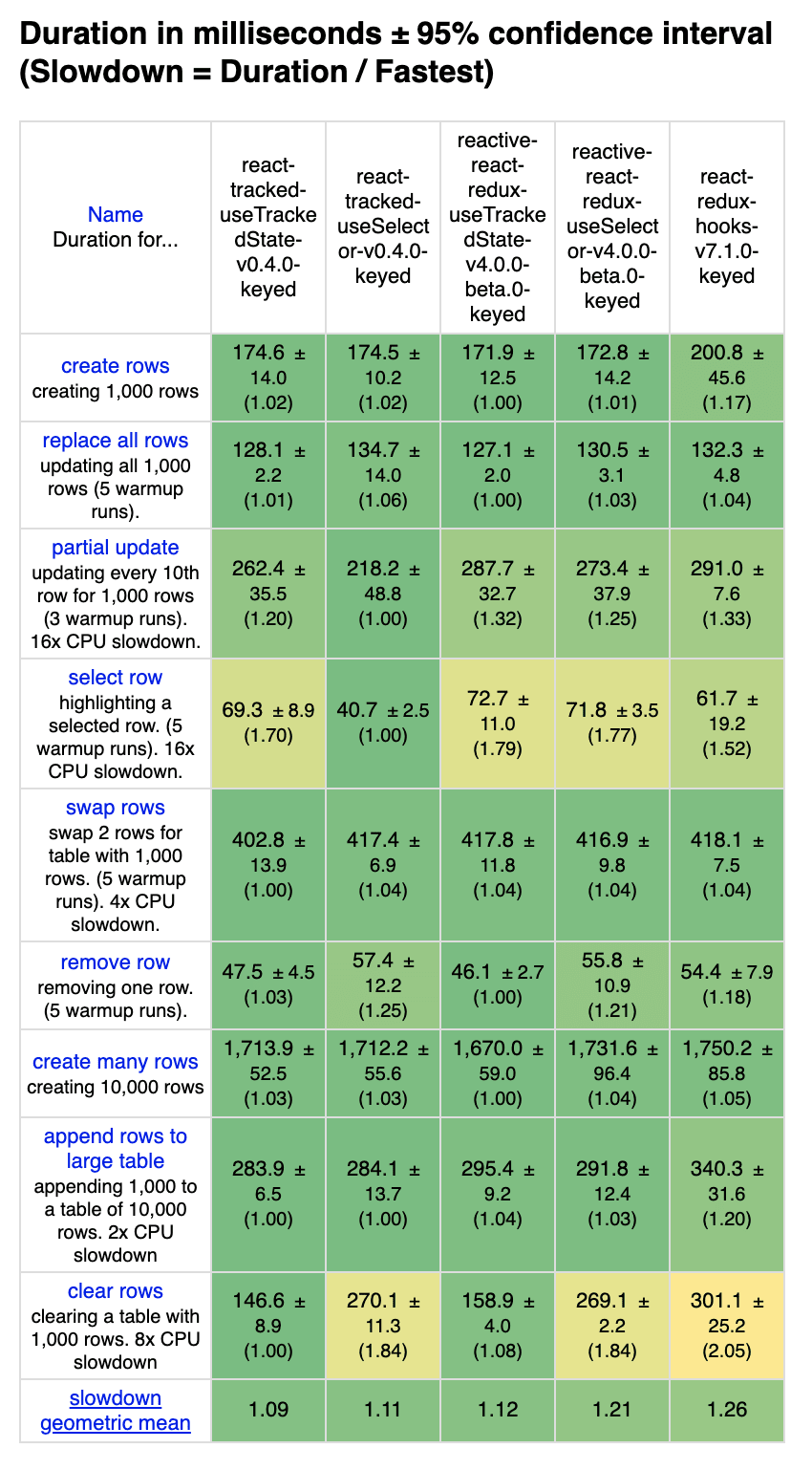
To connect with me, follow me on Twitter, where I spend most of my time engaging in coding and web development-related discussions. I hope it gives you a basic understanding of Redux so you can start making something with it on your own.

But if you know 50% of it, you're like a Superman.Īt the end of it all, this is what you'll have: So, in the counter reducer, I will put in the following snippet of code: const counterReducer = (state = 1, action) => from "react-redux" Ĭonst counter = useSelector((state) => unter) Ĭonst auth = useSelector((state) => th) In this example, I will be going with switch. A lot of people typically create the reducer with a switch statement, but it is also possible to use an if statement.

In the reducers folder, I create a file named counterReducer.js. I like to create both of them in an actions and reducers folder, then I put them in a folder I name Redux for clarity.
USESELECTOR REACT REDUX UPDATE
Reducers, on the other hand, check which action is performed and update the state based on the action. useSelector reads a value from the store state and subscribes to updates, while useDispatch returns the stores dispatch method to let you dispatch actions. Actions are what the name implies – they are objects that determine what will be done. Next, we need to create the actions and reducers. Redux is stand-alone and react-redux gives us access to several hooks that make life easier.
USESELECTOR REACT REDUX HOW TO
How to Set Up the Projectįirst of all, you need to install the redux and react-redux packages from NPM by running the command npm i redux react-redux. In this article, I teach you how to make a counter application with Redux in a React app, so you'll have enough basic knowledge to start using Redux in your projects. This gives you the ability to bring it in anywhere you need it.

In a React app, the major problem Redux solves is that, instead of managing the state of the app by passing down props (which is unidirectional) the entire state is saved in a globalized store. There are walkarounds you can use in React, for example, like prop drilling and context, while Vue JS has VueX and Angular has NGRX. And it's true – using Redux in small applications is like shooting an ant with a cannon. Redux is also often criticized because it has so much boilerplate to manage application state. It might take you a while to get used to it and you might end up checking your previous projects to figure out how to get things done. Redux can really be intimidating at first. Developers commonly use it with React through the react-redux package, but it can also stand alone – so you can use it in any front end framework or library, including Vanilla JavaScript. Here is my _app.Redux is a state management library for front end applications. Step 1: Set up a new React project Create a new React project using Create React App by running the following command in your terminal: npx create-react-app react-redux-demo Step 2. I'm having trouble figuring out the best way to achieve this, and I'm also very concerned about whether my current approach follows best practices. This guide will cover how to implement the React-Redux Hooks, useSelector and useDispatch, in your application. It works as I have implemented it, but now I'm trying to avoid making multiple requests to the backend API.

I'm currently building a Next.js application where I'm attempting to set the initial Redux store with a user and team object. React useSelector without re-render React optimisation hack Why Sometimes you want to use a redux useSelector hook to collect updated values while NOT causing a re-render.


 0 kommentar(er)
0 kommentar(er)
